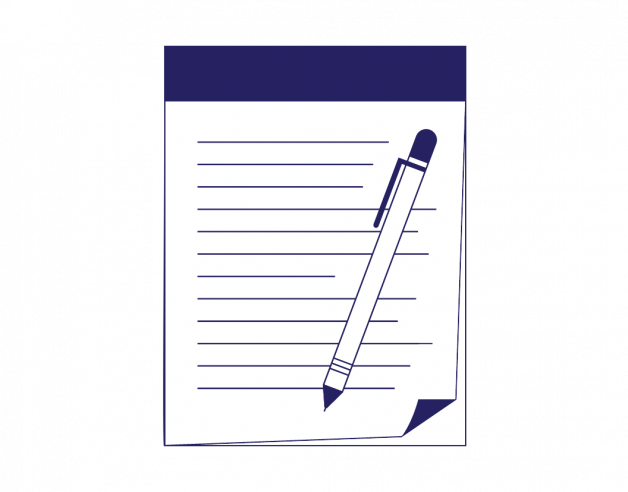
- 4-minute read
- 4th April 2023
An Introduction to Possessive Pronouns – With Examples
We’re always looking to make life easier, right? This goes just as much for written and spoken language as for other aspects of life. In an earlier post, we looked at how to use pronouns to replace nouns and make sentences easier to read. But let’s look at another application:
The sentence is grammatically correct, and its meaning is easy to understand. But it would be much simpler – and would sound more natural – to say:
or
The single words my and mine, which we’ve used here to replace phrases in the original sentence, are possessive pronouns. Let’s have a look at them in more detail.
What Is a Possessive Pronoun?
While a pronoun replaces a single noun in a sentence (e.g., it instead of the pen), a possessive pronoun replaces a phrase that indicates a relationship to (or ownership or possession of) something or someone. Therefore, in the above example, we replaced the phrases dealing with the pen and whom it belongs to in two different ways. We’ll look at both:
- That pen is the pen that belongs to me. ➜ That is my pen.
When we use the possessive pronoun my in this way, it works almost the way an adjective does, describing the pen by referring to the person it belongs to. A noun needs to follow this type of possessive pronoun (called a possessive determiner) for the sentence to make sense:
- That pen is the pen that belongs to me ➜ That pen is mine.
When we use the possessive pronoun mine this way, it replaces both the name of the owner and the object they possess. This type of possessive pronoun (called an independent possessive pronoun) needs to stand alone (hence the name) for the sentence to make sense:
What Are the Possessive Pronouns?
There are six independent possessive pronouns:
And there are seven possessive determiners:
And they work hard! From these few words, we can show whether the thing or person described is exclusive to one owner:
That is your pen, Toby. OR That pen is yours, Toby.
It is her book, so give it back. OR The book is hers, so give it back.
It’s his problem, so let him deal with it. OR The problem is his, so let him deal with it.
And we can show that a number of people or things share what’s being described:
Find this useful?
Subscribe to our newsletter and get writing tips from our editors straight to your inbox.
That is your classroom, 9Q. OR That classroom, 9Q, is yours.
Iit’s their classroom, so let them in. OR The classroom is theirs, so let them in.
Some Common Mistakes
Don’t Use Apostrophes
You’ll have learned that adding an apostrophe is a reliable way to make a noun possessive. However, doing this is not necessary with pronouns. Those six independent possessive pronouns and seven possessive determiners do all the work of showing possession without you having to add anything. Therefore, we get:
Stephen and Clare’s house is next door. ➜ Theirs is next door.
Don’t Oversimplify
If you replace too much information with possessive pronouns, your meaning may become lost. For example, you may have written this:
As the writer, you may know that one person has something that doesn’t belong to them – but what is it? and to whom does it belong? To eliminate this ambiguity, ensure that you’ve clearly indicated which word(s) you’re replacing, as you would with all pronouns:
Now we know that it is a drink that belongs to Alistair, not Caitlin.
Possessive Pronouns: Summary
● Possessive pronouns can simplify your writing and make it sound more natural.
● By doing away with unnecessary repetition, they can also keep your word count down and the attention of your reader engaged.
● A noun must follow a possessive determiner (e.g., my), while independent possessive pronouns (e.g., mine) need to stand alone.
● It’s important to ensure that there is enough surrounding information for your reader to understand which words are being replaced by possessive pronouns.
● Never use an apostrophe to make a pronoun possessive.
As always, proofreading your writing is important. But doing this isn’t always easy when you’re tired, have already spent ages writing and rewriting, or simply aren’t sure whether you’ve used the language correctly. We have experts available to help, 24/7. You can even try our service for free!






